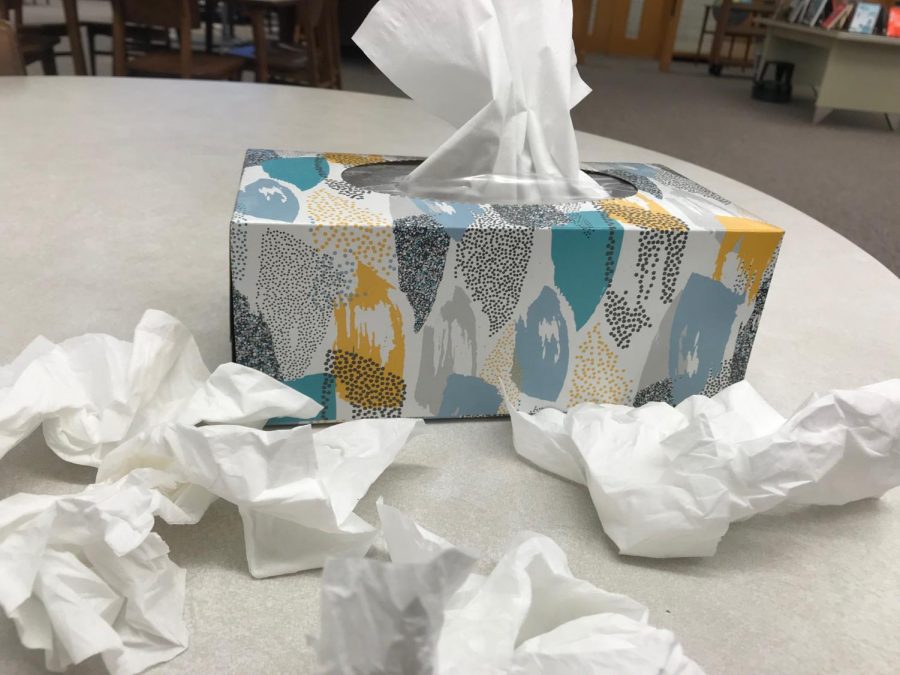The NASH Plague
Is absenteeism due to illness worse this year than in years past?
The numbers from the Attendance Office bear out the belief that students are getting sick more often this year than in recent years past.
Like a swarm of locusts settling upon Egypt, a wave of illness has settled over NASH. Stuffy noses, coughs, vomiting, strep, high fever, the flu… Each one piles up to form one definition for the misery that has settled upon us. “The NASH Plague.”
“The worst flu season in years,” the kids call it. Entire tissue boxes can disappear within a class period and cough drops have become a backdoor “prison currency.” Last week, musical rehearsals let out hours earlier in response to numerous cast members losing their voices. Attendance has spiraled, especially in first period, where students are choosing to miss the first class of the day to cling to their pillows for “just an hour longer.”
Some people blame their friends for not covering their coughs. Others blame the weather. Others still blame the anti-vaxxers for not vaccinating their kids and making diseases spread faster.
But is there any truth behind The Plague? Is there any evidence that can prove that the plague does exist, other than the typical symptoms of an average flu season? And is it really true that this year is worse than any other year?
So, as my friends and teachers around me fell to the sniffles and coughs, the flu and stomach virus, I set out in pursuit of The Plague.
My first act to prove its existence was to venture down to the Attendance Office, the place most likely to accumulate evidence of diseased children, and ask if Ms. Fenton could pull the attendance records from the past four years. From 2015 to 2019, I had an accurate reading of student attendance every day leading up to the beginning of March.
From there, I could see that the average student attendance at NASH was, without fail, 94 percent every single year up until that time frame. From there, it was a simple matter of figuring out which days student attendance dropped below the average. So I went through the records and highlighted every day with an attendance record of 93 percent and below.
The most frequently missed days were, unsurprisingly, the days before Christmas and Thanksgiving break, which averaged an attendance rate between 70 and 80 percent depending on the year. The only day that broke that pattern was October 10th of this year, when the PSAT was given to juniors and only 77 percent of students actually attended. Other than that date, every other year followed this pattern.
From there, all I had to do was compare. The term “The NASH Plague” was coined back in January, so I took the below-average attendance rates from before winter break and contrasted them to rates after.
And the results were astonishing. Every year, for the past four years, more days were missed before break than after. The only year that got close to evening the odds was 2016/2017, which witnessed 12 missed days after the break than compared to 14 before it.
But this year, 17 days were below average attendance following the break. That’s 17 days compared to the 13 days before it. It is the only year to break this pattern with an increase of thirty percent compared to the next highest year, the 2016/2017 school year.
Numbers don’t lie. This, if anything, should prove the existence of The Plague more accurately than calculating tissue usage or cough drop wrappers. Yet there was still a chance that this is just an extreme case of senioritis and, with that in mind, I went to the one person that would know whether the plague truly exists: the school nurse, Nikki Scrabis.
In the end, I conducted two interviews with her, two days apart from each other. In the first one, she expressed some doubt about the existence of The Plague due to the lack of true flu symptoms, since the running definition of The Plague is the worst “flu” season.
“Honestly, it is not,” she said. “Last year was probably the worst year. There is a virus going around right now that is similar to the flu, but it isn’t the true flu. It’s like some general body aches, but there is no fever with it, just some stomach issues. So we haven’t been seeing as much of the'”true flu’ as we did last year. Last year was definitely worse.”
But two days following this interview, she stopped me in the hall and told me her opinion had changed. “I have officially seen the flu at NASH,” she said. “Boom.”
So, there you have it. The NASH Plague is real. It’s here, it’s terrible, and it’s spreading. I would know because, as I type up this article, I do it beside a box of tissues while simultaneously trying not to throw up again.
In my pursuit of the plague, I did indeed find it. And yes, I can officially say, along with the rest of the school, that it is “the absolute worst.”

Rin Swann is a senior at NASH and, in her spare time, she enjoys drinking Peach Snapple, musical theater, and plotting for her inevitable take-over of the modern world. She will be attending the University of Iowa in the fall for creative writing and journalism.



